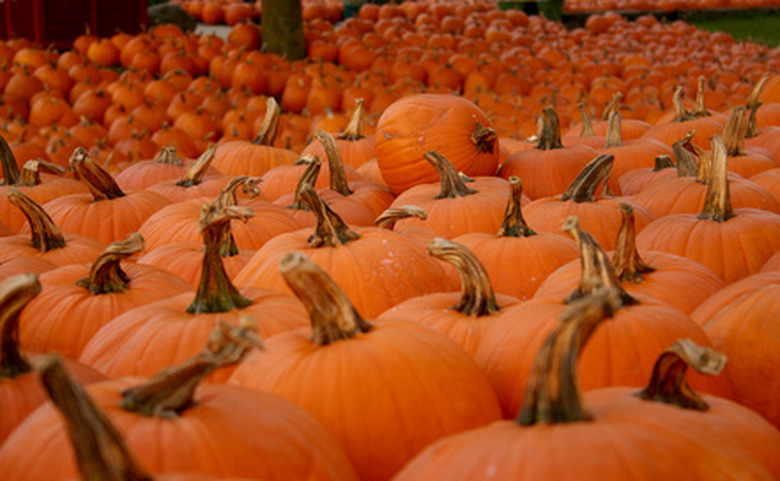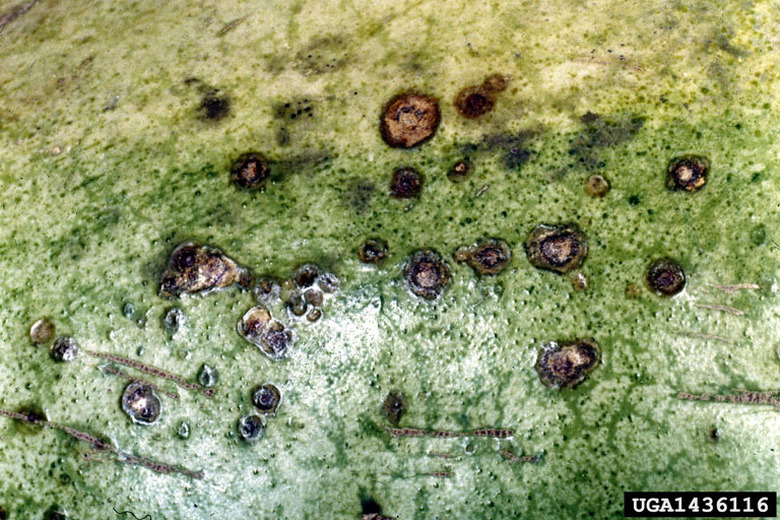How To Treat Pumpkin Plant Fungus
Several types of fungal diseases can affect pumpkins (Cucurbita pepo) as well as other gourds in the family Cucurbitaceae, which also includes zucchini and watermelons. One way to avoid these diseases is to plant resistant varieties. Cultural practices and preventative use of fungicides are also helpful.
Powdery Mildew on Pumpkins
Pumpkin leaves turning white is usually an indication of a disease known as powdery mildew, which manifests as a powdery white substance on leaf surfaces. Unchecked, a powdery mildew infection can result in defoliation of the plant.
While this condition affects many types of plants, in members of the cucurbit family, it is usually caused by the fungi Podosphaera xanthii and Erysiphe chicoracearum.
Cercospora Leaf Spot
The disease known as Cercospora leaf spot is caused by the fungus Cercospora citrullina. Dark brown lesions with lighter tan or white centers emerge on older leaves and spread. The leaf tissue around the spots may turn yellow. The spots often dry out and fall off, leaving holes in the foliage.
This disease develops on wet leaves, especially when temperatures are between 79 and 90°F. In some cases, the disease can spread to the stems and petioles.
Gummy Stem Blight
Caused by the fungal pathogen Didymella bryoniae, gummy stem blight produces brown spots that eventually engulf the leaf. The common name of this disease is a reference to the sticky brown substance that oozes from wounds, or cankers, on the stems of infected plants. Eventually, the entire vine succumbs to the disease.
Practicing crop rotation, keeping the plant leaves and stems dry when watering and removing debris from the garden bed at the end of the growing season can help keep this disease in check. It is also important to grow pumpkins using disease-free seeds, as the disease might be seedborne.
Verticillium Wilt in Pumpkins
Verticillium wilt, which affects pumpkin vines and leaves, is caused by the fungus Verticillium dahliae, which can survive in the soil for up to 10 years.
The disease usually appears after the vines have set fruit. It begins with leaves wilting and drying up. This disease usually affects one side of the vine.
Managing Fungal Diseases of Pumpkins
There are cultural practices that can help control the fungal pathogens that infect pumpkins.
Cleaning Up the Patch and Removing Weeds
It is important to understand that the fungi that cause pumpkin diseases overwinter on plant debris and mulch. Therefore, cleaning up the pumpkin patch and removing weeds at the end of the growing season is crucial.
The fungi that cause pumpkin diseases overwinter on plant debris and mulch.
Practice Crop Rotation
Because fungal pathogens can linger in the soil, it is always a good idea to practice crop rotation. This means not growing pumpkins where you have grown pumpkins or other cucurbit crops in the last two or three years.
It is also important to grow pumpkins using disease-free seeds, as some diseases might be seedborne.
Provide Good Air Circulation and Avoid Overhead Watering
Fungal diseases thrive in moist conditions. Therefore, providing your pumpkin plants with good air circulation and keeping the leaves dry by refraining from overhead watering are also important to control pumpkin diseases.
Fungal diseases thrive in moist conditions.
Consider Applying Preventative Fungicides
Chemical control is sometimes necessary to control fungal diseases. Preventative fungicides for pumpkin diseases include chlorothalonil, and mancozeb can also be helpful. When using these products on edible crops, it is important to follow product directions for safety purposes.

